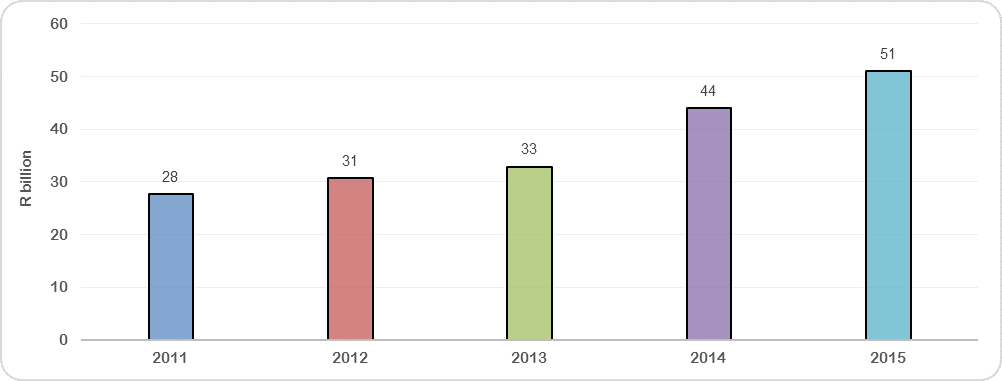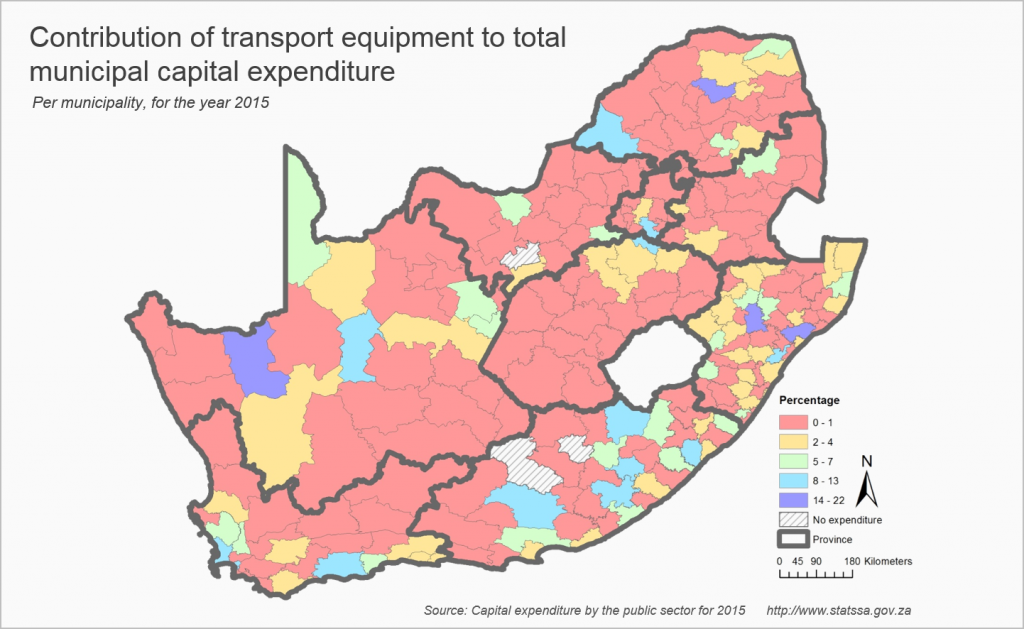Municipalities raise infrastructure spending despite tough economic conditions
Municipalities continue to invest heavily in service delivery-related infrastructure, according to Stats SA’s latest Capital expenditure by the public sector report.
Municipalities increased their total capital expenditure (or capex) from R51,7 billion in 2014 to R59,0 billion in 2015, a rise of 14,3%. The largest component of municipal spending on infrastructure in 2015 was on new construction works (R51,1 billion, or 87% of total capex), followed by expenditure on plant, machinery and equipment (R3,6 billion or 6%), land and existing buildings (R1,5 billion or 3%), transport equipment (R1,3 billion or 2%), and leased assets and investment property (R0,95 billion or 2%).
Spending on construction rose from R28 billion in 2011 to R51 billion in 2015.
Municipal spending on new construction works, 2011–2015
Some examples of capex by the metropolitan municipalities in 2015 include:
- The City of Johannesburg incurred capex of R10,2 billion, which included the following: spending on emergency management equipment and infrastructure in Martindale City Wide; installation of 4 737 public lights in Sundown, Honeydew and other locations; and the construction and upgrading of Cydna and Nirvana power substations.
- The City of Cape Town capex was R5,3 billion. The city spent about R3,6 billion on new construction works, split between funding for roads, electricity and water infrastructure. The city also replaced 48 622 metres of water reticulation mains.
- The City of eThekwini capex was R4,8 billion. The projects with the biggest capex were: rehabilitation of roads; upgrading of ablution facilities; development of public transport infrastructure via the Corridor C3 project; the expansion of Phoenix water treatment works; and continued development of the Western Aqueduct, which is the city’s water flagship project.
- The City of Tshwane recorded capex of R4,8 billion. The metro spent R4,0 billion on construction works. Projects included the A RE YENG Tshwane BRT infrastructure and road system, Tshwane House, the Tsosoloso Programme, and the Re-Aga-Tshwane programme (involving the formalising of informal settlements).
Examples of some district municipalities’ capex during 2015 include:
- Capricorn spent R560 million or 95,2% of its capex on new construction works. The two main projects were the construction of a water testing laboratory at the University of Limpopo and the construction of the Blouberg landfill site.
- Amathole spent R1,0 billion or 98,2% of its capex on new construction works. Some examples include the construction of a waste transfer station at Idutywa as well as VIP latrines. There was also continued development of the district’s heritage routes.
Examples of local municipalities’ capex on transport during 2015 include:
- Midvaal spent R9 million or 12,9% of its capex on purchases of traffic vehicles and double cab trucks.
- Big Five False Bay spent R0,6 million or 5,0% of its capex on purchases of vehicles.
- Molemole spent R2,5 million or 17,4% of its capex on purchases of motor vehicles and conservancy vehicles.
- Msinga spent R10 million or 21,9% of its capex on purchases of motor vehicles.
Summary: municipal breakdown of capital expenditure by type, 2014 and 2015
Download the complete report here.




